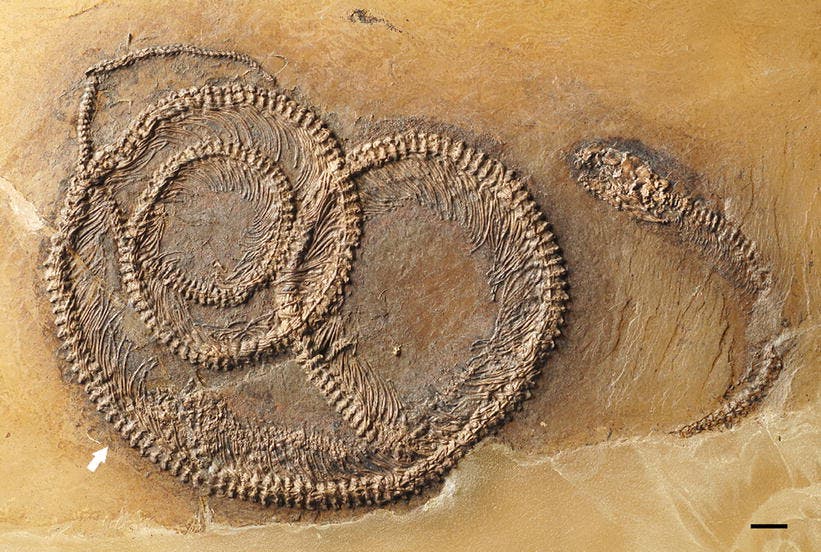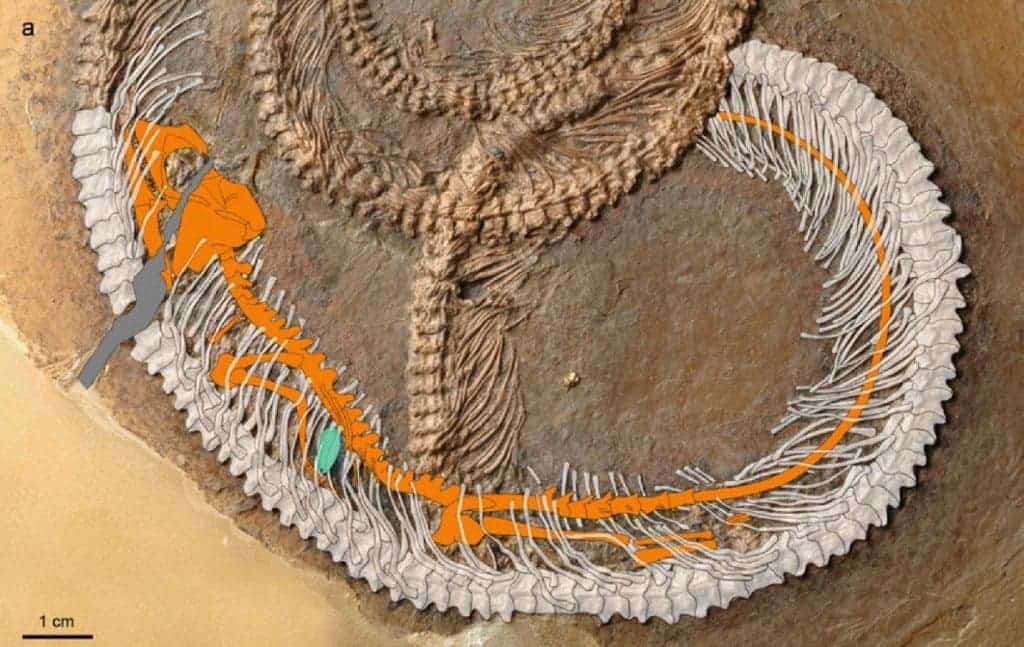Forty-eight million years ago, a snake, a lizard, and an insect would unknowingly had a very, very bad day. But their Eocene tragedy would yield one of the most spectacular fossil finds of this year: the three animals fossilized together, one inside the other.

Image credits Smith, K.T. & Scanferla A. / Palaeobio Palaeoenv (2016).
The fossil includes an unidentified insect ingested by a Geiseltaliellus maarius stem-basilisk (lizard,) which itself ended up as dinner for a juvenile Palaeopython fischeri snake. It was found in the Messel Pit, Germany, an area “renowned for the fidelity of preservation.” Today it’s a disused quarry but while these animals still lived, Messel was a volcanic lake with deep, toxic waters, and prone to belch out deadly clouds of carbon dioxide.
It’s unclear how the snake died, but no more than two days after eating the lizard it lay dead on the lake floor encased in fine sediment which would fossilize it, the lizard inside, and the insect inside both.
The fossil is the second of its kind ever found, and it preserves both the animals and a little piece of the day’s food chain. The other one was described in 2008 by a team led by the University of Vienna’s Jürgen Kriwet — it was a fossil of a shark that ate an amphibian with a spiny fish in its stomach.
It is, by all accounts, an astonishing find.
“It’s probably the kind of fossil that I will go the rest of my professional life without ever encountering again, such is the rarity of these things,” says Krister Smith, lead author of the paper describing the fossil.
“It was pure astonishment.”
The fossil will help define the range of Paleopython, which despite isn’t closely related to modern pythons.
“This fossil is amazing,” says Agustin Scafalera, co-author of the paper.
“We were lucky men to study this kind of specimen.”

Image credits Smith, K.T. & Scanferla, A. / Palaeobio Palaeoenv (2016).
Maybe this is why my grandma told me not to swim after eating.



